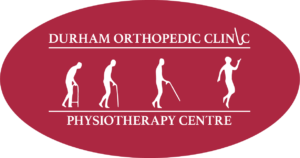As spring blooms and nature awakens, so does the dreaded allergy season for many individuals. Seasonal allergies can bring about a range of symptoms, including nasal congestion, sneezing, and difficulty breathing, which can significantly impact daily life. There are some physiotherapy techniques that can help you breathe easier and manage seasonal allergies more effectively.
Understanding Seasonal Allergies:
Before delving into physiotherapy techniques, it’s essential to understand the underlying causes of seasonal allergies. Pollen, mold spores, and other allergens can trigger allergic reactions in susceptible individuals, leading to inflammation in the nasal passages and airways.
Physiotherapy Techniques for Managing Allergy Symptoms:
Nasal Irrigation
- Nasal irrigation, also known as nasal douching or saline irrigation, involves flushing out allergens and mucus from the nasal passages using a saline solution. The technique is fairly easy to do.Using a neti pot, pour the saline solution slowly into the upper nostril( your neck is in a slight side bent position).
- Allow the solution to pour out your other nostril and into the drain.Breathe through your mouth.Repeat on the opposite side.
Breathing Exercises:
- Controlled breathing techniques can help alleviate allergy symptoms and promote relaxation. Physiotherapy-guided breathing exercises, such as diaphragmatic breathing and pursed-lip breathing, can reduce respiratory muscle tension and enhance lung function, making breathing easier during allergy flare-ups.
Postural Drainage:
- Postural drainage involves positioning the body to facilitate the drainage of mucus from the lungs and airways. This is used in more serious conditions. Physiotherapists can demonstrate specific postural drainage positions tailored to your individual needs, helping clear congestion and improve breathing capacity.
Airway Clearance Techniques:
- Airway clearance techniques, such as percussion,, help loosen and mobilize mucus in the airways, making it easier to expel. Chest percussion is a manual technique which involves clapping the chest or back to loosen the thick mucous from the sides of the lungs. Physiotherapists can teach you how to perform these techniques effectively, providing relief from chest congestion and coughing associated with allergies.
Incorporating Lifestyle Modifications
In addition to physiotherapy techniques, certain lifestyle modifications can help minimize allergy symptoms and improve overall respiratory health:
- Using air purifiers and humidifiers to remove allergens from the air and maintain optimal indoor humidity levels.
- Keeping windows closed during peak pollen seasons and using air conditioning to filter indoor air.
- Practicing good hygiene, such as washing hands frequently and changing clothes after outdoor activities, to prevent allergen exposure.
Seasonal allergies need not derail your daily activities or compromise your quality of life. By incorporating physiotherapy techniques and lifestyle modifications into your allergy management plan, you can breathe easier, reduce symptoms, and enjoy the beauty of spring without the burden of allergies weighing you down. Consult with a physiotherapist to learn more about how these techniques can benefit you and empower yourself to take control of your respiratory health this allergy season.
If you are looking to start physiotherapy or see a registered massage therapist contact the professionals at Durham Orthopedic and Sports Injury Clinic and start your road to recovery today!


